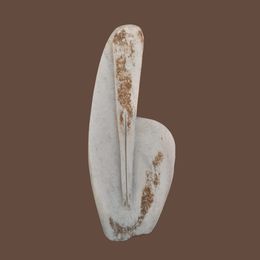Zachariah was born on September 24, 1962, at Birchenough Bridge in central Zimbabwe. It is part of the Ndau tribe, a tribe specific to this part of Zimbabwe, between the Shona in the north and the Ndebele in the south of the country. Their language is also a mixture of shona and ndebele.
He is the fourth child in a family of six, and at the age of 13, he stops school because his parents can not continue to pay for his studies. Already, during his studies, he is familiar with sculpture thanks to an uncle who works with wood.
As soon as he stops school, Zachariah stays at home helping his father to work the land, continues the woodworking and starts carving the stone in his spare time.
At 20, he moved to Harare to look for work. He discovers the Canon Paterson Art Center where young artists can get equipment and stone for free. In return, their creations are sold by the center for the benefit of the blind and disabled.
Very quickly, Zachariah becomes self-employed and his very recognizable style of work allows him to exhibit in all major galleries of Harare. The curves and the lines get married to deliver a result full of sweetness and simplicity. His perfect mastery of the serpentine reveals pure, timeless, design sculptures.
Zachariah has for some years been one of the leading artists of the current generation of Zimbabwean sculptors. His works are now exhibited in international galleries (United States, Belgium, Germany, England, Australia, France ...)
Read more


